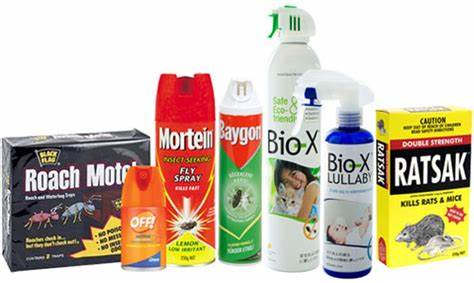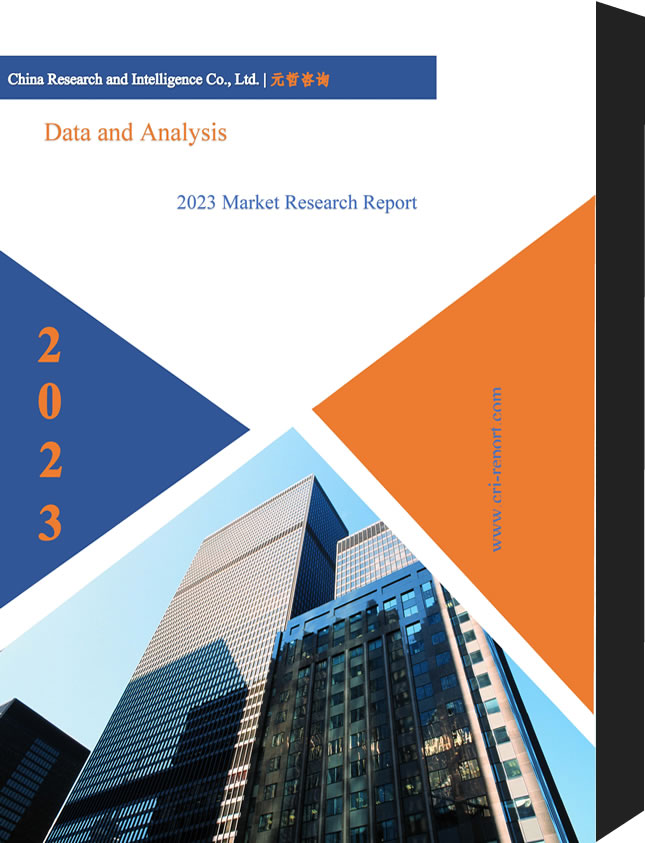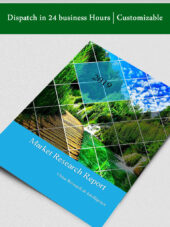Description
Australia Grain Protectant Insecticides Market Research Report Forecast to 2028
Market Overview
The Australia grain protectant insecticides market is expected to register a notable growth rate during the forecast period. There are several factors responsible for driving the growth of the grain protectant insecticides market, including the increasing need for storing grains to overcome the impact of fluctuating market prices of grains.

Farmers, traders, and stockiest store their grains in warehouses until desirable market prices are received, and demand for grains exceeds the supply. The major challenge faced during the storage of grains is the post-harvest loss caused by pest infestation. This is driving the market growth of grain protectant insecticides.
However, frequent usage of chemical grain protectant insecticides has led to increasing insecticide resistance in insects, thus hampering the market’s growth. Furthermore, advancements in farming practices and technologies are likely to create an opportunistic market for the players due to increasing market yield.
Grain protectant insecticides help preserve the quality of the grains from insect damage. They are one of many management tools to prevent pests in stored grains. Grain protectant insecticides are designed to prevent pest infestation and are applied to the bulk grain as it goes into the storage bin. They usually provide grain protection for three to nine months.
Market Segmentation
Based on type, the Australia grain protectant insecticides market has been segmented into chemical insecticides and biological insecticides. The chemical insecticides segment accounted for a larger market share of 73.26% in 2020 and is likely to register a CAGR of 5.40% during the forecast period, while the biological insecticides segment is likely to register a higher CAGR of 5.83% during the review period.
Based on target insects, the Australia grain protectant insecticides market has been segmented into Beetles, Grain Borer, Weevils, and others. The Grain Borer segment accounted for the largest market share of 33.14% in 2020. Based on grain type, the Australia grain protectant insecticides market has been segmented into Rice, Wheat, Corn, Barley, and others.
The Corn segment accounted for the largest market share of 31.35% in 2020 and is likely to register a CAGR of 5.35% during the forecast period, while the Rice is likely to register the highest CAGR of 5.86% during the review period.
Major Players
The key players operating in the Australia grain protectant insecticides market include Nufarm (Australia), BASF SE (Germany), Syngenta (Switzerland), Bayer (Germany), FMC Corporation (US), Corteva, Inc. (US), Degesch America (US), Central Life Sciences (US), UPL Limited (India), BioSyent Inc. (Canada).
COVID 19 Impacts
We are continuously tracking the impact of the COVID-19 pandemic on various industries and verticals within all domains. Our research reports include the same and help you understand the drop and rise, owing to the impact of COVID-19 on industries. Also, we help you to identify the gap between the demand and supply of your interested market. Moreover, the report helps you with the analysis, amended government regulations, and many other useful insights.
TABLE OF CONTENTS
1 EXECUTIVE SUMMARY
1.1 AUSTRALIA GRAIN PROTECTANT INSECTICIDES MARKET, BY TYPE
1.2 AUSTRALIA GRAIN PROTECTANT INSECTICIDES MARKET, BY TARGET INSECT
1.3 AUSTRALIA GRAIN PROTECTANT INSECTICIDES MARKET, BY GRAIN TYPE
2 MARKET INTRODUCTION
2.1 DEFINITION
2.2 SCOPE OF THE STUDY
2.3 RESEARCH OBJECTIVE
2.4 MARKET STRUCTURE
2.5 KEY BUYING CRITERIA
3 RESEARCH METHODOLOGY
3.1 RESEARCH PROCESS
3.2 PRIMARY RESEARCH
3.3 SECONDARY RESEARCH
3.4 MARKET SIZE ESTIMATION
3.5 FORECAST MODEL
3.6 LIST OF ASSUMPTIONS
4 MARKET DYNAMICS
4.1 INTRODUCTION
4.2 DRIVERS
4.2.1 POST-HARVEST GRAIN LOSSES
4.2.2 RISING AGRICULTURAL PRODUCTIVITY
4.2.3 DRIVERS IMPACT ANALYSIS
4.3 RESTRAINTS
4.3.1 GROWING INSECT RESISTANCE TO CONVENTIONAL CHEMICALS
4.3.2 RESTRAINTS IMPACT ANALYSIS
4.4 OPPORTUNITIES
4.4.1 ADVANCEMENTS IN FARMING PRACTICES AND TECHNOLOGIES
5 MARKET FACTOR ANALYSIS
5.1 VALUE CHAIN ANALYSIS
5.1.1 RAW MATERIAL PROCUREMENT AND RESEARCH & DEVELOPMENT
5.1.2 PROCESSING
5.1.3 PACKAGING
5.2 SUPPLY CHAIN ANALYSIS
5.3 PORTER’S FIVE FORCES MODEL
5.3.1 THREAT OF NEW ENTRANTS
5.3.2 BARGAINING POWER OF SUPPLIERS
5.3.3 THREAT OF SUBSTITUTES
5.3.4 BARGAINING POWER OF BUYERS
5.3.5 INTENSITY OF RIVALRY
5.4 IMPACT OF COVID-19 ON THE AUSTRALIA GRAIN PROTECTANT INSECTICIDES MARKET
5.4.1 IMPACT ON SUPPLY CHAIN
5.4.2 IMPACT ON RAW MATERIAL AVAILABILITY AND PRICING
5.4.3 IMPACT ON THE MARKET
5.5 REGULATORY SCENARIO FOR GRAIN PROTECTANT INSECTICIDES IN AUSTRALIA
6 GLOBAL GRAIN PROTECTANT INSECTICIDES MARKET
7 AUSTRALIA GRAIN PROTECTANT INSECTICIDES MARKET, BY TYPE
7.1 OVERVIEW
7.2 CHEMICAL
7.3 BIOLOGICAL
7.3.1 AUSTRALIA GRAIN PROTECTANT INSECTICIDES MARKET ESTIMATES & FORECAST, BY TYPE, 2019–2028
8 AUSTRALIA GRAIN PROTECTANT INSECTICIDES MARKET, BY TARGET INSECT
8.1 OVERVIEW
8.2 BEETLES
8.3 GRAIN BORERS
8.4 WEEVILS
8.5 OTHERS
8.5.1 AUSTRALIA GRAIN PROTECTANT INSECTICIDES MARKET ESTIMATES & FORECAST, BY TARGET INSECTS, 2019–2028
9 AUSTRALIA GRAIN PROTECTANT INSECTICIDES MARKET, BY GRAIN TYPE
9.1 OVERVIEW
9.2 RICE
9.3 WHEAT
9.4 CORN
9.5 BARLEY
9.6 OTHERS
9.6.1 AUSTRALIA GRAIN PROTECTANT INSECTICIDES MARKET ESTIMATES & FORECAST, BY GRAIN TYPE, 2019–2028
10 COMPETITIVE LANDSCAPE
10.1 INTRODUCTION
10.1.1 MARKET STRATEGY ANALYSIS
10.2 COMPETITIVE BENCHMARKING
10.3 KEY DEVELOPMENTS & GROWTH STRATEGIES
10.3.1 PRODUCT DEVELOPMENTS
10.3.2 ACQUISITIONS
10.3.3 PARTNERSHIPS
10.3.4 COLLABORATIONS
10.3.5 EXPANSIONS
10.3.6 TECHNOLOGY LAUNCH
10.3.7 PARTNERSHIPS
10.3.8 DIVESTMENTS
10.3.9 RESEARCH & DEVELOPMENT
11 COMPANY PROFILES
11.1 NUFARM
11.1.1 COMPANY OVERVIEW
11.1.2 FINANCIAL OVERVIEW
11.1.3 PRODUCTS OFFERED
11.1.4 KEY DEVELOPMENTS
11.1.5 SWOT ANALYSIS
11.1.6 KEY STRATEGIES
11.2 BASF SE
11.2.1 COMPANY OVERVIEW
11.2.2 FINANCIAL OVERVIEW
11.2.3 PRODUCTS OFFERED
11.2.4 KEY DEVELOPMENTS
11.2.5 SWOT ANALYSIS
11.2.6 KEY STRATEGIES
11.3 SYNGENTA
11.3.1 COMPANY OVERVIEW
11.3.2 FINANCIAL OVERVIEW
11.3.3 PRODUCTS OFFERED
11.3.4 KEY DEVELOPMENTS
11.3.5 SWOT ANALYSIS
11.3.6 KEY STRATEGIES
11.4 BAYER
11.4.1 COMPANY OVERVIEW
11.4.2 FINANCIAL OVERVIEW
11.4.3 PRODUCTS OFFERED
11.4.4 KEY DEVELOPMENTS
11.4.5 SWOT ANALYSIS
11.4.6 KEY STRATEGIES
11.5 FMC CORPORATION
11.5.1 COMPANY OVERVIEW
11.5.2 FINANCIAL OVERVIEW
11.5.3 PRODUCTS OFFERED
11.5.4 KEY DEVELOPMENTS
11.5.5 SWOT ANALYSIS
11.5.6 KEY STRATEGIES
11.6 CORTEVA
11.6.1 COMPANY OVERVIEW
11.6.2 FINANCIAL OVERVIEW
11.6.3 PRODUCTS OFFERED
11.6.4 KEY DEVELOPMENTS
11.6.5 KEY STRATEGIES
11.7 DEGESCH AMERICA, INC.
11.7.1 COMPANY OVERVIEW
11.7.2 FINANCIAL OVERVIEW
11.7.3 PRODUCTS OFFERED
11.7.4 KEY DEVELOPMENTS
11.7.5 KEY STRATEGIES
11.8 CENTRAL LIFE SCIENCES
11.8.1 COMPANY OVERVIEW
11.8.2 FINANCIAL OVERVIEW
11.8.3 PRODUCTS OFFERED
11.8.4 KEY DEVELOPMENTS
11.8.5 KEY STRATEGIES
11.9 UPL LTD.
11.9.1 COMPANY OVERVIEW
11.9.2 FINANCIAL OVERVIEW
11.9.3 PRODUCTS OFFERED
11.9.4 KEY DEVELOPMENTS
11.9.5 KEY STRATEGIES
11.10 BIOSYENT
11.10.1 COMPANY OVERVIEW
11.10.2 FINANCIAL OVERVIEW
11.10.3 PRODUCTS OFFERED
11.10.4 KEY DEVELOPMENTS
11.10.5 KEY STRATEGIES
12 REFERENCES
Related Report
Research Report on China’s Grain Sorghum Import 2023-2032
Europe Insecticides Market Outlook 2030: Industry Insights & Opportunity Evaluation, 2019-2030
Global Bioinsecticides Market Outlook 2030: Industry Insights & Opportunity Evaluation, 2019-2030




Reviews
There are no reviews yet.